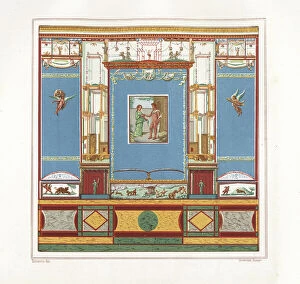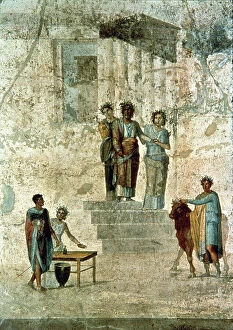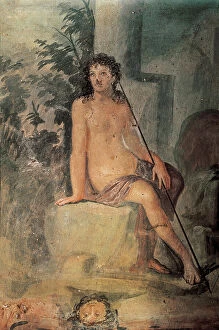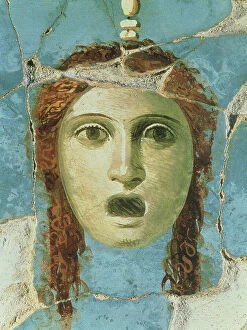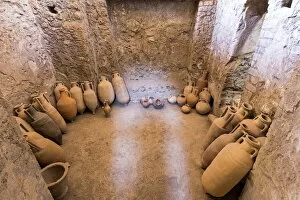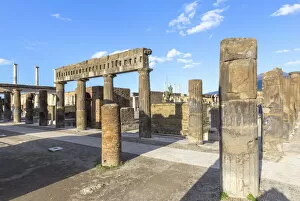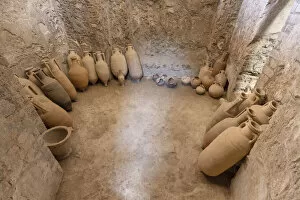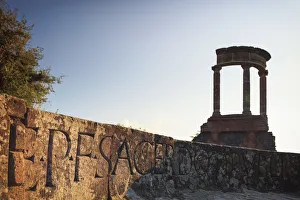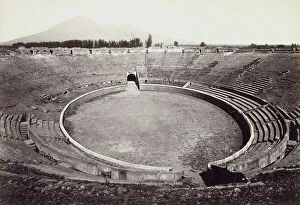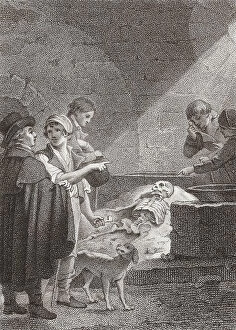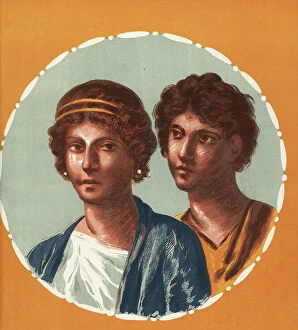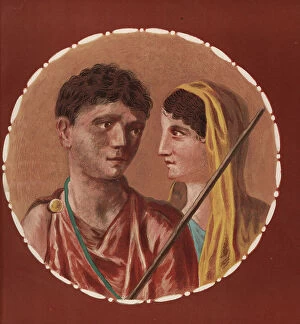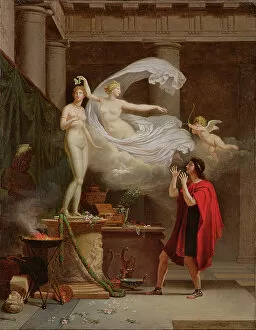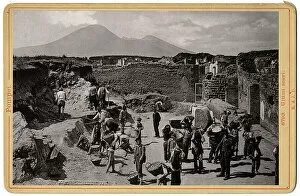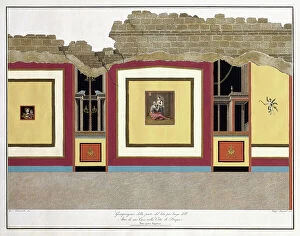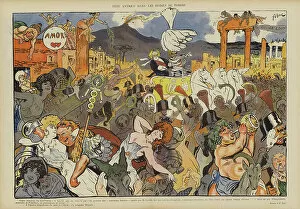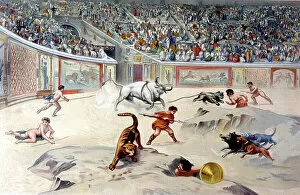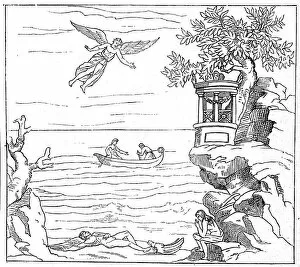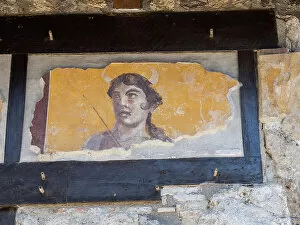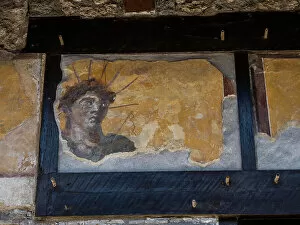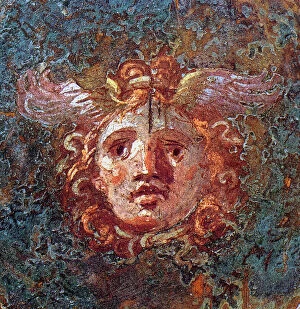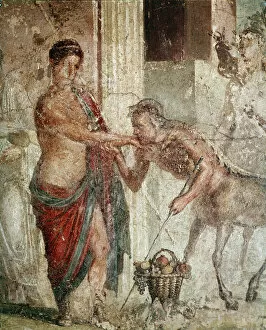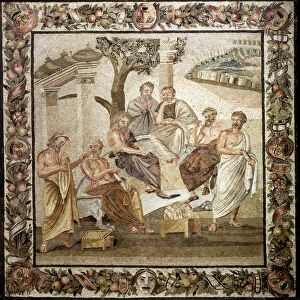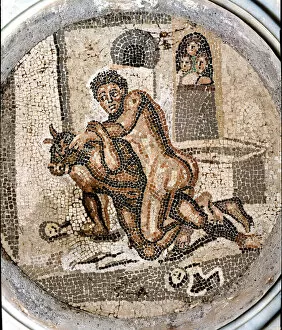Archaeological Areas of Pompei, Herculaneum and Torre Annunziata Collection (page 6)
The Archaeological Areas of Pompei, Herculaneum and Torre Annunziata are three UNESCO World Heritage Sites located in the Campania region of Italy
845 items
All Professionally Made to Order for Quick Shipping
-
Archaeological Areas of Pompei, Herculaneum and Torre Annunziata Collection
The Archaeological Areas of Pompei, Herculaneum and Torre Annunziata are three UNESCO World Heritage Sites located in the Campania region of Italy. The sites are renowned for their archaeological remains, which provide a unique insight into the everyday life of the Roman Empire. Pompei is an ancient Roman city that was destroyed by the eruption of Mount Vesuvius in 79 AD. Herculaneum is another ancient city that was also destroyed by the same eruption and features numerous well-preserved ruins, including villas and baths. Torre Annunziata is an archaeological site featuring a large necropolis with tombs from different periods in history, from prehistory to classical antiquity. Together these sites offer visitors a glimpse into life during this period in history and provide an important reminder of our shared cultural heritage.
+
Our beautiful Wall Art and Photo Gifts include Framed Prints, Photo Prints, Poster Prints, Canvas Prints, Jigsaw Puzzles, Metal Prints and so much more
The Archaeological Areas of Pompei, Herculaneum and Torre Annunziata are a collection of heritage sites located in Italy, Europe. The Media Storehouse offers a range of products featuring these historic locations including wall art, framed prints, photo prints, canvas prints, jigsaw puzzles and greeting cards. Pompei is an ancient Roman city that was destroyed by the eruption of Mount Vesuvius in 79 AD. It has been preserved as a UNESCO World Heritage Site since 1997 due to its unique archaeological value. Similarly, Herculaneum is another ancient Roman town that was also buried by the same volcanic eruption. The site features well-preserved buildings and artifacts from daily life during the Roman period. Torre Annunziata is a small town near Pompei that also contains important archaeological finds such as villas and public buildings from the Roman era. These three sites offer visitors an opportunity to explore the rich history of Italy's past through their impressive ruins and artifacts.
+
What are Archaeological Areas of Pompei, Herculaneum and Torre Annunziata (Heritage Sites Italy Europe) art prints?
The Archaeological Areas of Pompei, Herculaneum and Torre Annunziata are heritage sites located in Italy, Europe. These areas contain ancient ruins that have been preserved for centuries and provide a glimpse into the lives of people who lived during the Roman Empire. Art prints of these archaeological areas showcase the stunning beauty and historical significance of these locations. They capture the intricate details of the architecture, sculptures, frescoes and mosaics found within these sites. These art prints serve as a reminder to us all about our rich cultural heritage and offer an opportunity to bring a piece of history into our homes or offices. Whether you are an art collector or simply appreciate beautiful imagery with historical significance, these prints are sure to impress. With their high-quality printing techniques and attention to detail, we offer a wide range of art prints featuring these iconic heritage sites that will make any room come alive with history.
+
What Archaeological Areas of Pompei, Herculaneum and Torre Annunziata (Heritage Sites Italy Europe) art prints can I buy from Media Storehouse?
We offer a wide range of art prints showcasing the archaeological areas of Pompei, Herculaneum and Torre Annunziata - all UNESCO World Heritage Sites in Italy, Europe. These prints capture the beauty and history of these ancient cities that were destroyed by the eruption of Mount Vesuvius in AD 79. The collection includes stunning photographs and illustrations depicting the ruins, artifacts, frescoes and mosaics found at these sites. The Pompeii prints feature iconic landmarks such as the Amphitheatre, Forum, House of Vettii and Villa dei Misteri. The Herculaneum prints showcase well-preserved buildings like the House of Neptune and Amphitrite, College of Augustales and Samnite House. Meanwhile, Torre Annunziata's art prints highlight its impressive Roman villas with intricate designs on their walls. These heritage site art prints from Media Storehouse are perfect for anyone who loves history or wants to add an artistic touch to their home or office decor.
+
How do I buy Archaeological Areas of Pompei, Herculaneum and Torre Annunziata (Heritage Sites Italy Europe) art prints?
To purchase Archaeological Areas of Pompei, Herculaneum and Torre Annunziata art prints from Media Storehouse, you can browse our extensive collection of high-quality images online. Once you have found the image or images that you would like to purchase, simply select the size and format that suits your needs best. We offer a variety of options for printing your chosen artwork, including canvas prints, framed prints and photographic prints. You can also choose from a range of finishes such as gloss or matte. Once you have made your selection and completed the checkout process, Media Storehouse will print your chosen artwork using state-of-the-art technology to ensure that it is produced to the highest standards. Your order will then be carefully packaged before being shipped directly to your door. Whether you are looking for a stunning piece of wall art for your home or office, or a unique gift for someone special, we have everything you need to bring these incredible heritage sites into your life in a beautiful way.
+
How much do Archaeological Areas of Pompei, Herculaneum and Torre Annunziata (Heritage Sites Italy Europe) art prints cost?
We offer a wide range of art prints featuring the archaeological areas of Pompei, Herculaneum and Torre Annunziata. The cost of these prints varies depending on factors such as size, framing options and print quality. We strive to provide our customers with high-quality prints at affordable prices. Our collection includes a variety of images showcasing the beauty and historical significance of these heritage sites in Italy. From stunning aerial views to close-up shots highlighting intricate details, there is something for everyone in our selection. Whether you are looking to decorate your home or office with beautiful artwork or simply want to add to your collection, our Pompei, Herculaneum and Torre Annunziata art prints are an excellent choice. With their timeless appeal and rich history, they make for truly unique pieces that will be cherished for years to come.
+
How will my Archaeological Areas of Pompei, Herculaneum and Torre Annunziata (Heritage Sites Italy Europe) art prints be delivered to me?
We take great care in delivering your Archaeological Areas of Pompei, Herculaneum and Torre Annunziata art prints to you. Our team ensures that your order is carefully packaged to ensure its safe delivery. We use high-quality materials for packaging, including sturdy cardboard tubes or flat packages with protective layers. We work with reliable shipping partners who offer a range of delivery options to suit your needs. Depending on the size and destination of your order, we may use standard postal services or courier companies for faster delivery times. Once your order has been dispatched from our warehouse, you will receive an email notification with tracking information so that you can monitor the progress of your shipment. If you have any questions about the delivery process or need assistance with tracking your package, our customer service team is always available to help. Rest assured that when you purchase Archaeological Areas of Pompei, Herculaneum and Torre Annunziata art prints from Media Storehouse, we will do everything possible to ensure they arrive safely and promptly at their intended destination.



